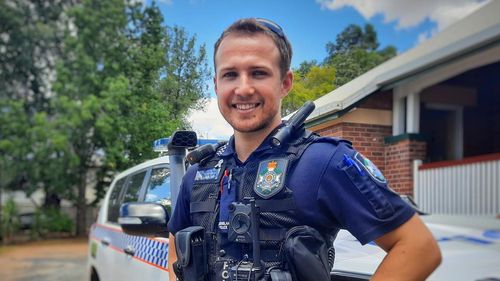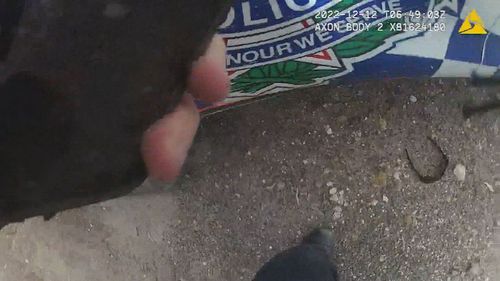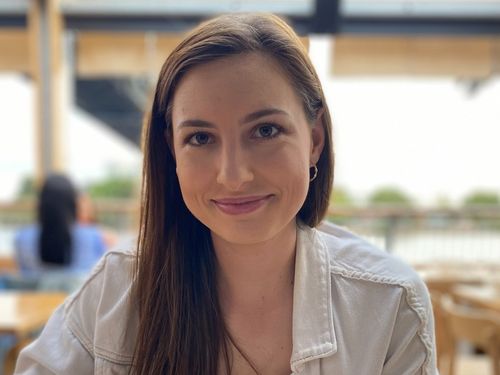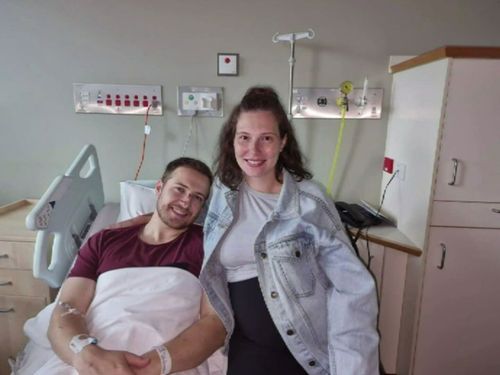A coronial inquest into the deadliest Queensland police shooting in history was today shown intense body cam footage of an officer running from his life.
Constable Randall Kirk was wounded after he and three other junior officers entered a rural property at Wieambilla, northwest of Brisbane, as part of a missing persons inquiry on the afternoon of December 12, 2022.
Kirk, who survived the shooting ambush said he had “no alternative” but to run as his handgun was outmatched by men with high-powered rifles, a coroner has heard.

Constables Matthew Arnold and Rachel McCrow were shot dead in cold blood by brothers Nathaniel and Gareth Train as the two officers walked along a winding dirt driveway.
Family of the gunned down officers wanted people to see the realities police face, with the coroner releasing the bodycam footage to give Australians a new insight into the disaster.
Kirk gave evidence on Tuesday, at the second day of a five-week coronial inquest in Brisbane.
He told counsel assisting Ruth O’Gorman he did not see either of the Trains before Arnold was shot in the chest without warning.

Kirk said he could not recall yelling “get back, get back” to his fellow officers, as was captured on his body-worn camera.
“I initially ran to a tree. I recall then laying on my stomach… I was trying to avoid being shot,” he told the inquest.
State Coroner Terry Ryan on Monday heard evidence Nathaniel Train was concealed in a “hide” made of leaves and branches about 70 metres from the officers and was watching them through his rifle’s scope before opening fire.

Kirk said the Trains’ property was in an area known as “The Blocks” that was home to people who preferred to live off the grid and was riddled with police radio “blackspots”.
“I recall my radio was not working. I had to use my phone to call (Chinchilla station Acting Sergeant Justin) Dryer… I was constantly scanning around the tree… It appeared Constable Arnold just wasn’t moving,” he said.
Kirk said McCrow was also shot and was screaming and rolling around on the ground, but he could not get to her as the shooters were still hidden.

Constable Keely Brough was able to reach nearby grass where she hid from the Trains for two hours until backup arrived.
Nathaniel Train left the hide and watched the scene from the nearby treeline, while Gareth Train approached Arnold’s body and removed his police Glock handgun.
Kirk told the coroner he had been instructed that the maximum accurate distance for a Glock was 15 metres and the closest shooter was about 30 metres away.
Gareth Train moved towards McCrow and she fired 15 rounds from her Glock, emptying its ammunition magazine.
Kirk said he had not been spotted at this time and was able to watch from behind the tree.
“I saw him walk up to her. They exchanged words. He fatally shot her,” he said.
Kirk then fired his own Glock at Gareth Train but did not continue firing as the first bullet did not hit the target and had alerted Nathaniel Train to start scanning the trees for surviving officers.
Kirk reported to Dryer that Arnold and McCrow were dead.

“I remember him saying I had to look after myself. I asked if I should run,” he said.
O’Gorman asked Kirk if he had any alternative at that time.
“I thought I had none,” he said.
Kirk was shot in the hip and abdomen as he ran from tree to tree and jumped over a gate to reach a police vehicle.
Nathaniel, Gareth and his wife Stacey Train were killed by specialist police six hours after the constables were gunned down.
They refused to negotiate and opened fire on police helicopters and an armoured vehicle.
The Trains earlier shot and killed neighbour Alan Dare who had come to investigate.
Queensland Police at the time said the Trains committed a “religiously motivated terrorist attack” influenced by the fundamentalist Christian ideology of Premillennialism and had believed the world would soon end.
